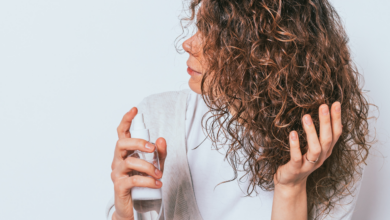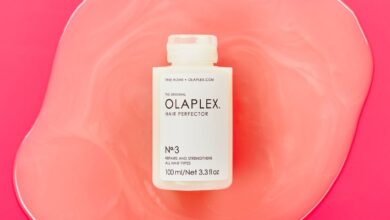
Are you tired of battling the aftermath of chemical treatments on your hair? Look no further! In this article, we will explore the secrets to reviving your natural hair type after subjecting it to the damaging effects of chemicals. Whether you’ve gone through straightening, perming, or coloring, we’ve got you covered with tips and tricks to bring back the luscious locks you were born with. Say goodbye to dull, lifeless hair and hello to a rejuvenated, vibrant mane that will have heads turning. It’s time to embrace your natural beauty and embark on a journey towards healthier, happier hair. Let’s get started!
Understanding the Damage
What are chemical treatments?
Chemical treatments refer to any process in which chemicals are used to alter the structure, texture, or color of the hair. This can include treatments such as relaxers, perms, keratin treatments, and hair dyes. These treatments typically involve the use of harsh chemicals that break down the hair’s proteins and bonds, resulting in permanent changes to the hair.
How do chemical treatments affect natural hair?
Chemical treatments can have a profound impact on natural hair. The chemicals used in these treatments can strip the hair of its natural oils, leaving it dry and brittle. They can also weaken the hair strands, making them more prone to breakage and damage. Additionally, chemical treatments can alter the hair’s natural texture and disrupt its overall health and balance.
Common types of damage caused by chemical treatments
Chemical treatments can cause various types of damage to natural hair. Some common forms of damage include:
- Dryness: Chemical treatments often strip the hair of its natural oils, causing it to become excessively dry and lacking moisture.
- Breakage: The chemicals used in these treatments can weaken the hair strands, making them more susceptible to breakage and split ends.
- Hair loss: In some cases, chemical treatments can lead to hair loss due to the damage inflicted on the hair follicles.
- Scalp irritation: The harsh chemicals used in chemical treatments can irritate the scalp, leading to dryness, itching, and flakiness.
- Texture changes: Chemical treatments can alter the hair’s natural texture, resulting in straighter or curlier hair than its original state.
Understanding the extent of the damage caused by chemical treatments is crucial in order to effectively restore and revive your natural hair type.
Assessing the Current State of Your Hair
Identifying signs of damage
To assess the current state of your hair, it’s important to identify signs of damage. These signs may include:
- Brittle or dry hair: If your hair feels rough, lacks moisture, and is prone to breakage, it could be a sign of damage.
- Split ends: Split ends occur when the hair shaft becomes damaged and splits into two or more strands. Regular trims can help prevent further damage.
- Thin or fine hair: Chemical treatments can lead to hair thinning or loss of volume, resulting in hair that looks thinner or lacks fullness.
- Hair that lacks elasticity: When hair lacks elasticity, it becomes more prone to breakage and is less able to withstand manipulation or styling.
- Changes in hair texture: If your hair texture has significantly changed after a chemical treatment, such as becoming straighter or curlier, it is a sign that damage has occurred.

Determining your hair porosity
Hair porosity refers to the hair’s ability to absorb and retain moisture. Understanding your hair’s porosity level can help determine the best products and techniques to use for maximum moisture and damage repair. There are three types of hair porosity:
- High porosity: This type of hair absorbs moisture easily but also loses it quickly. It often feels dry and is prone to frizz and breakage.
- Low porosity: Low porosity hair has a tightly closed cuticle layer, which makes it more resistant to moisture absorption. It tends to repel moisture, resulting in dryness and product buildup.
- Normal porosity: Hair with normal porosity has a balanced ability to absorb and retain moisture. It has a healthy level of elasticity and overall hair health.
Determining your hair’s porosity level can be done through a simple test. Take a clean, dry strand of hair and place it in a glass of water. If the strand sinks quickly, you likely have high porosity hair. If it floats at the top, you may have low porosity hair. If it sinks slowly to the middle, you have normal porosity hair.
Evaluating hair elasticity
Hair elasticity refers to the hair’s ability to stretch and return to its original shape without breaking. Healthy hair typically has good elasticity, while damaged hair may lack elasticity and break easily. To evaluate your hair’s elasticity, take a strand of hair and gently stretch it. Healthy hair should have some elasticity and be able to stretch without breaking. If your hair snaps or breaks easily when stretched, it may be a sign of damage.
Assessing your hair’s elasticity can help determine the level of damage and guide you in choosing appropriate treatments and care routines to restore its health.
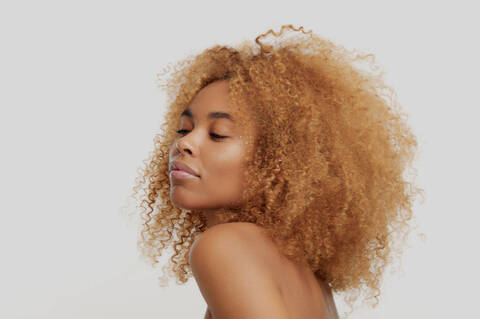
Reversing Chemical Damage: The Road to Recovery
Trimming and cutting off the damaged ends
One of the first steps in reversing chemical damage is trimming and cutting off the damaged ends of your hair. This helps remove the most damaged and split ends and prevents further damage from traveling up the hair shaft. Regular trims every 6-8 weeks can promote healthier hair growth and gradually remove the damaged sections.
Deep conditioning treatments
Deep conditioning treatments are essential for restoring moisture and elasticity to chemically damaged hair. These treatments involve using specially formulated conditioners that penetrate the hair shaft, nourishing and repairing it from within. Look for deep conditioners with ingredients like shea butter, coconut oil, or argan oil, as these can provide intense hydration and nourishment.
To deep condition your hair, apply the conditioner generously to clean, damp hair. Cover your hair with a shower cap or plastic bag and leave the conditioner on for at least 30 minutes or as directed. Rinse it out thoroughly and enjoy softer, more manageable hair.
Protein treatments for strength
Chemical treatments can weaken the hair strands by breaking down the proteins that give hair its strength. Protein treatments can help restore and rebuild these proteins, strengthening the hair and reducing breakage. Look for protein treatments or masks containing ingredients like hydrolyzed keratin, collagen, or silk amino acids.
Ensure not to overload your hair with protein treatments as excessive protein can make the hair stiff and prone to breakage. Use protein treatments once every 4-6 weeks or as recommended by your haircare professional.
Avoiding heat styling tools
Heat styling tools, such as flat irons, curling irons, and blow dryers, can cause further damage to chemically treated hair. The high temperatures can strip away moisture, weaken the hair, and contribute to breakage. To promote hair recovery, it’s best to avoid or minimize the use of heat styling tools. Embrace your natural hair texture and opt for heatless styling methods, such as air drying, braiding, or twist-outs.
Protective styling to promote growth
Protective styling is an effective way to promote hair growth and nurture damaged hair. These styles typically involve low manipulation and provide a protective barrier against environmental factors, reducing the risk of breakage. Protective styles can include braids, twists, buns, or even wearing a wig or weave.
When choosing protective styles, ensure they are not too tight or pulling on the hair, as this can lead to further damage or hair loss. Opt for styles that allow your scalp to breathe and are easy to maintain.
Transitioning to Your Natural Hair
Deciding on the right transition method
Transitioning from chemically treated hair to your natural hair can be a gradual process or involve the “big chop,” where all chemically treated hair is removed in one go. Deciding on the right transition method is a personal choice and depends on your desired outcome and comfort level.
If you prefer a gradual transition, you can opt to grow out your natural hair while trimming off the chemically treated ends regularly. This method allows you to maintain some length while embracing your natural hair texture.
The big chop vs. gradual grow-out
The big chop involves cutting off all of your chemically treated hair at once, leaving you with short, natural hair. This method provides a fresh start and allows for a quicker transition to your natural hair. It can be a liberating experience and can help you embrace your unique hair texture from the beginning.
On the other hand, a gradual grow-out allows you to maintain some length while transitioning. It can be a more conservative approach for those who are hesitant about shorter hair lengths. This method requires patience, commitment, and regular trims to gradually remove the damaged ends.
Tips for managing multiple textures
During the transition phase, it’s common to have multiple textures in your hair – the new growth and the chemically treated hair. Managing multiple textures can be challenging, but with the right techniques, it can be a seamless process.
Some tips for managing multiple textures include:
- Moisturize regularly: Focus on moisturizing both the new growth and the chemically treated hair to prevent dryness and breakage.
- Use protective styles: Protective styles can help blend the different textures and minimize manipulation.
- Detangle with care: Be gentle when detangling to prevent unnecessary breakage. Use a wide-tooth comb or your fingers to detangle, starting from the ends and working your way up.
- Experiment with product combinations: Find a balance between products that cater to your natural hair texture and those that are suitable for chemically treated hair.
By understanding and embracing your unique hair journey, you can transition to your natural hair with confidence and style.
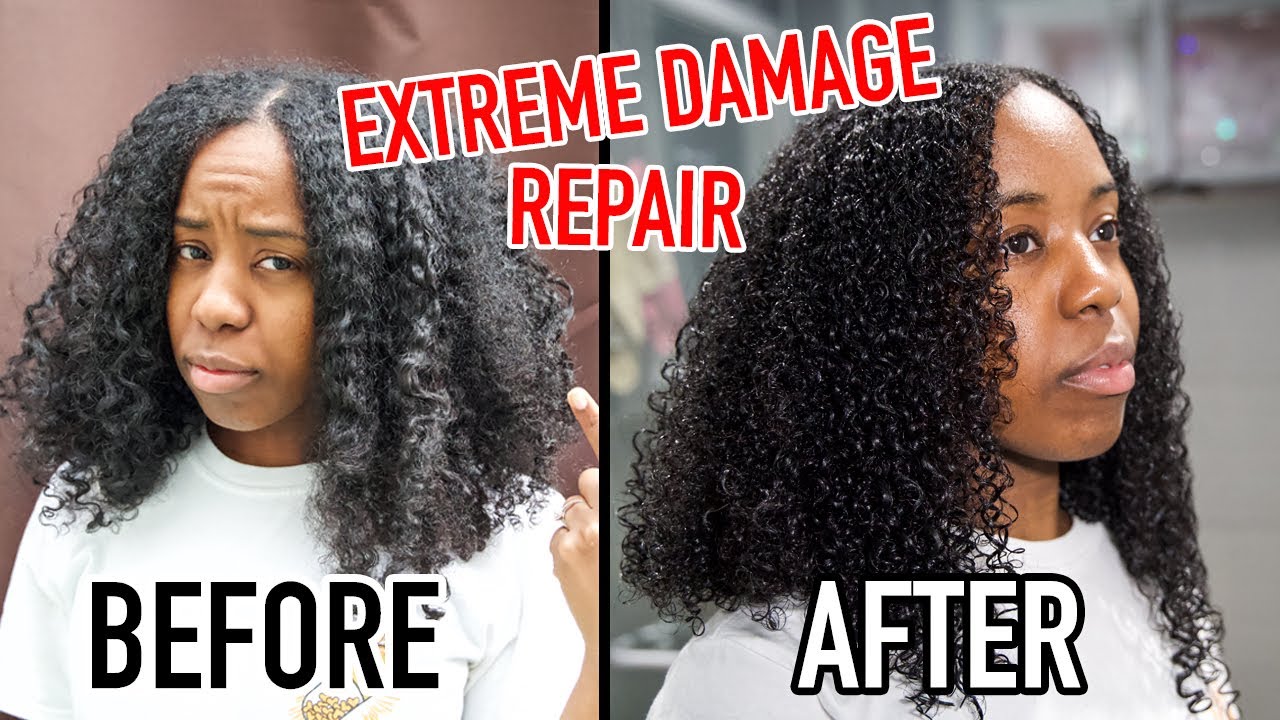
Choosing the Right Products
Understanding product ingredients
When choosing products for your hair, it’s essential to understand the ingredients used. Avoid products that contain sulfates, parabens, and other harsh chemicals, as these can further damage already compromised hair. Look for products with natural, nourishing ingredients that promote hair health and repair.
Some beneficial ingredients to look for include shea butter, coconut oil, aloe vera, argan oil, and jojoba oil. These ingredients provide hydration, nourishment, and protection to promote healthier, revived hair.

Finding sulfate-free shampoos and conditioners
Sulfates are harsh detergents commonly found in shampoos that can strip the hair of its natural oils and moisture. When selecting shampoos and conditioners, opt for sulfate-free options. These gentler formulas cleanse the hair without drying it out, helping to retain moisture and repair damage.
Look for sulfate-free shampoos and conditioners specifically formulated for damaged or chemically treated hair. These products can help restore moisture and maintain the health of your natural hair.

Moisturizers and sealants for hydration
Moisturizing and sealing your hair is crucial for retaining moisture and preventing dryness, especially after chemical damage. Moisturizers penetrate the hair shaft, providing hydration and nourishment, while sealants help lock in the moisture, reducing water loss.
Look for moisturizers such as leave-in conditioners, creams, or butters that contain hydrating ingredients like aloe vera, glycerin, or hyaluronic acid. After applying a moisturizer, seal in the moisture with a natural oil or butter, such as coconut oil, olive oil, or shea butter.
Choosing natural oils for hair care
Natural oils can be highly beneficial in promoting hair health and repairing damage. They help moisturize the hair, reduce frizz, enhance shine, and protect against environmental stressors. Some popular natural oils for hair care include:
- Coconut oil: Known for its moisturizing properties, coconut oil can penetrate the hair shaft, reducing protein loss and improving hair strength.
- Argan oil: Rich in vitamins and antioxidants, argan oil nourishes and conditions the hair, promoting softness and manageability.
- Jojoba oil: Similar to the natural oils produced by the scalp, jojoba oil can help balance oil production, moisturize the hair, and promote a healthy scalp.
- Olive oil: With its emollient properties, olive oil can deeply moisturize and soften the hair, reducing dryness and improving elasticity.

Experiment with different natural oils to find the ones that work best for your hair type and needs. Incorporate them into your haircare routine by applying a small amount to damp or dry hair, focusing on the ends.
Implementing a Healthy Haircare Routine
Regular washing and conditioning
Maintaining a regular washing and conditioning routine is vital for the health of your natural hair. Cleanse your hair with a gentle shampoo suitable for your hair type, massaging the scalp to remove product buildup and stimulate blood circulation. Follow with a moisturizing conditioner, focusing on the ends where hair tends to be drier.
It’s important not to overwash your hair, as this can strip away the natural oils and cause dryness. Aim to wash your hair 1-2 times a week or as needed, depending on your hair’s oiliness and activity level.
Using a wide-tooth comb for detangling
Detangling your hair can be a delicate process, especially when dealing with chemically damaged hair. To minimize breakage, use a wide-tooth comb or your fingers to gently detangle your hair, starting from the ends and working your way up to the roots. Apply a detangling spray or conditioner to help with the process and make it easier to remove knots and tangles.
Avoid using brushes or fine-tooth combs on wet hair, as they can cause excessive breakage and damage. Be patient and take your time when detangling to preserve the health of your natural hair.
Minimizing manipulation and styling
Excessive manipulation and styling can lead to damage and breakage, especially for chemically treated hair. Minimize the use of heat styling tools and opt for protective hairstyles that require minimal manipulation. Embrace your hair’s natural texture and experiment with different styles and techniques that accentuate its beauty.
When styling, avoid using tight hair ties or hairstyles that pull on the hair, as this can lead to breakage and hair loss. Be gentle with your hair and use accessories like silk scrunchies or satin headbands that are more hair-friendly.
Protecting hair during sleep
Protecting your hair while you sleep is essential for maintaining its health and preventing damage. Consider incorporating the following tips into your nighttime routine:
- Sleep on a satin or silk pillowcase: Cotton pillowcases can cause friction and absorb moisture from the hair. Satin or silk pillowcases minimize friction, reducing the risk of breakage and maintaining moisture.
- Use a satin or silk bonnet or scarf: By covering your hair with a satin or silk bonnet or scarf, you can further protect it from friction and moisture loss. This is especially important for longer hair or more elaborate hairstyles.
- Pineapple or braid your hair: For longer hair, pineapple your hair by gathering it at the top of your head in a loose ponytail or high bun. Alternatively, consider braiding your hair to keep it contained and prevent tangling.
By implementing these protective measures, you can ensure that your hair remains healthy and undamaged even while you sleep.
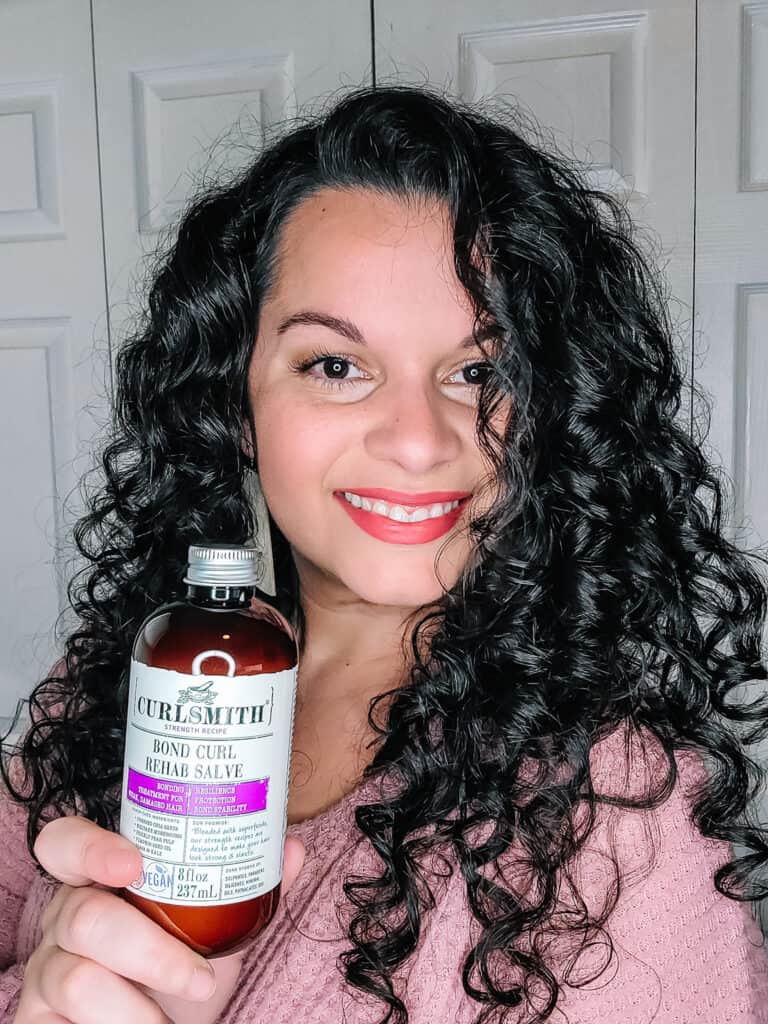
Maintaining Hair Health from Within
Eat a balanced diet for nourishment
Maintaining a balanced diet that includes nutrient-rich foods is essential for the health of your hair. Proper nutrition provides the necessary vitamins, minerals, and proteins needed for hair growth and repair. Include foods such as fruits, vegetables, lean proteins, whole grains, and healthy fats in your diet.
Specific nutrients that promote hair health include:
- Biotin: Found in eggs, nuts, and seeds, biotin promotes hair growth and strength.
- Iron: Iron-rich foods like leafy green vegetables, red meat, and legumes help prevent hair loss and promote healthy growth.
- Omega-3 fatty acids: Found in fatty fish, flaxseeds, and chia seeds, omega-3 fatty acids nourish the scalp and hair follicles, promoting healthy hair growth.
- Vitamin C: Citrus fruits, berries, and bell peppers are rich in vitamin C, which aids in the production of collagen, an important protein for hair strength.
A well-rounded diet will not only benefit your hair but also your overall health and well-being.
Drinking sufficient water
Hydration is crucial for the health of your hair. Drinking sufficient water helps to keep your scalp and hair follicles hydrated, promoting healthy hair growth. Aim to drink at least 8 glasses of water a day or more, depending on your activity level and climate.
If you find it challenging to drink plain water, try infusing it with fruits, herbs, or adding a squeeze of citrus for added flavor. Staying hydrated will not only benefit your hair but also your skin and overall health.
Supplements for hair growth
In addition to a balanced diet, certain supplements can support hair growth and strengthen the hair from within. Consult with a healthcare professional or a registered dietitian to determine which supplements may be beneficial for your specific hair needs.
Some commonly recommended supplements for hair growth include:
- Biotin: Biotin supplements can help strengthen hair and promote healthy growth. Consult with a healthcare professional for the appropriate dosage.
- Vitamin D: Vitamin D plays a role in hair follicle cycling and growth. If you have a deficiency, your healthcare professional may recommend supplementation.
- Omega-3 fatty acids: If your diet lacks sources of omega-3 fatty acids, fish oil supplements can help promote hair health and growth.
- Collagen: Collagen supplements can improve hair strength and thickness. Look for hydrolyzed collagen supplements specifically formulated for hair health.
It’s important to note that supplements should not replace a balanced diet but rather complement it to support overall hair health.
Avoiding excessive heat from hot showers
While hot showers can be relaxing, excessive heat can cause damage to chemically treated hair. Hot water strips away the natural oils from the hair, leaving it dry and prone to breakage. When washing your hair, opt for lukewarm or cool water temperatures to avoid excessive heat exposure.
Additionally, it’s beneficial to end your hair wash routine with a cool water rinse. Cool water helps seal the hair cuticle, promoting shine and reducing frizz. By avoiding excessive heat from hot showers, you can preserve the health and hydration of your natural hair.
Seeking Professional Help
Consulting a hairstylist or trichologist
If you’re struggling with severe damage or are unsure how to revive your natural hair after chemical treatments, it’s beneficial to consult with a professional hairstylist or trichologist. They have expertise in hair and scalp health and can provide personalized advice and guidance.
A hairstylist can assess the condition of your hair, recommend appropriate treatments or products, and provide styling tips for managing multiple textures. A trichologist specializes in hair and scalp conditions and can help identify underlying issues or causes of hair damage, providing targeted solutions for restoration.
Hair and scalp treatments at salons
Salons offer a variety of hair and scalp treatments that can help repair and revive chemically damaged hair. These treatments often involve deep conditioning, scalp exfoliation, and targeted therapies to restore moisture, strength, and balance to the hair and scalp.
Some popular salon treatments for damaged hair include:
- Olaplex: Olaplex is a hair treatment designed to repair and restore chemically damaged hair. It works by reconnecting broken disulfide bonds in the hair, strengthening and restoring its integrity.
- Keratin treatments: Keratin treatments help smooth frizz, reduce breakage, and improve the overall health and appearance of chemically damaged hair. These treatments infuse the hair with keratin proteins, restoring strength and elasticity.
- Scalp treatments: Scalp treatments can help address scalp issues such as dryness, flakiness, or irritation caused by chemical damage. These treatments often involve exfoliation, soothing masks, or targeted serums to promote a healthy scalp environment.
Consult with a hairstylist or salon professional to determine the most suitable treatment for your hair’s specific needs.
Receiving guidance on hair restoration
In some cases of severe hair damage or hair loss, seeking guidance from a hair restoration specialist may be necessary. Hair restoration specialists can diagnose the cause of hair loss, recommend appropriate treatments, and provide options for regaining hair thickness and fullness.
Depending on the severity and cause of hair loss, treatment options may include topical solutions, medications, laser therapy, or hair transplantation. It’s essential to consult with a reputable hair restoration specialist who can assess your specific needs and provide the most effective solutions for your hair restoration journey.
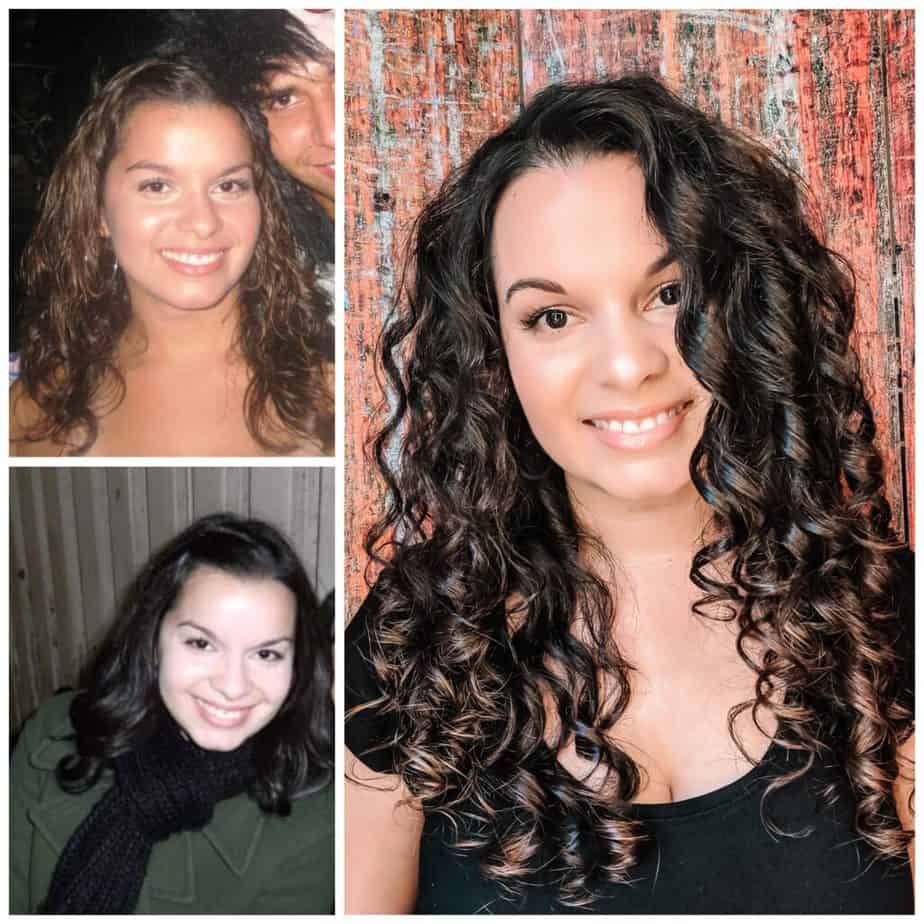
Dealing with Psychological Effects
Coping with self-image issues
Chemical damage to natural hair can have psychological effects, impacting your self-image and confidence. It’s important to acknowledge and address any self-image issues that may arise during the process of reviving your natural hair.
Remember that everyone’s hair journey is unique, and embracing your natural hair is a celebration of your individuality. Surround yourself with positive affirmations, seek support from loved ones, and focus on the positive aspects of your natural hair journey. Developing a healthy relationship with your hair will contribute to a positive self-image and increased self-confidence.
Support groups and communities
Connecting with like-minded individuals through support groups and online communities can provide invaluable support and encouragement during your natural hair journey. These platforms offer a safe space to share experiences, ask questions, and seek advice from others who are going through a similar process.
Look for hair forums, social media groups, or local meetups where you can connect with individuals who share your hair concerns and goals. Sharing your journey and learning from others can help you navigate the challenges and triumphs of reviving your natural hair.
Embracing and loving your natural hair
Embracing and loving your natural hair is a journey that takes time, patience, and self-acceptance. Celebrate the unique beauty of your natural hair and explore different styles and techniques that make you feel confident and empowered.
Experiment with various hairstyles, accessories, and products until you find what works best for you. Embrace the versatility of your natural hair and appreciate its resilience and beauty. By cultivating a positive and loving relationship with your natural hair, you can confidently flaunt your unique style and inspire others to embrace theirs.
Preventing Future Damage
Avoiding frequent chemical treatments
To prevent future damage to your natural hair, it’s essential to avoid frequent chemical treatments that can compromise its health. Evaluate the necessity and potential consequences before undergoing any chemical process.
Consider natural alternatives or styling methods that do not involve harsh chemicals. Embrace the beauty of your natural hair and reduce reliance on chemical treatments to maintain its health and integrity.
Properly caring for your natural hair
Proper care and maintenance are key to preventing future damage to your natural hair. This includes following a regular haircare routine, using suitable products, and being mindful of styling practices.
Keep your hair clean and well-hydrated by washing and conditioning it regularly. Use gentle products formulated for your hair type and needs, and avoid excessive manipulation or tight hairstyles that can cause breakage. Protect your hair from heat, UV rays, and environmental pollutants by using protective styles and products.
Protecting your hair from environmental factors
Environmental factors can contribute to hair damage, including exposure to UV radiation, pollution, and extreme weather conditions. Protect your natural hair by taking the following precautions:
- Wear a hat or head covering: When spending time in the sun, wear a hat or headscarf to shield your hair and scalp from UV rays.
- Use products with UV protection: Look for hair products that contain UV filters or ingredients that protect against sun damage.
- Rinse hair after swimming: Chlorine and saltwater can be drying to the hair. Rinse your hair thoroughly with clean water after swimming to remove any harmful residue.
- Minimize exposure to heat and extreme weather conditions: Extreme cold, heat, and humidity can affect the health of your hair. When possible, limit exposure to these conditions or take steps to protect your hair, such as wearing a hat or using a protective styling product.

By implementing these protective measures, you can reduce the risk of future damage and maintain the health and vitality of your natural hair.
In conclusion, reviving your natural hair after chemical treatments requires understanding the damage, assessing the current state of your hair, implementing a proper haircare routine, seeking professional help when needed, and embracing your unique hair journey. By following the tips and recommendations provided, you can embark on a path of hair restoration and self-love, confidently showcasing the beauty of your natural hair.
L’Oréal Paris Elvive Hyaluron Moisture Shampoo 400ml Twin Pack Review(Opens in a new browser tab)
Top Hair Growth Shampoos for Thinning Hair(Opens in a new browser tab)

